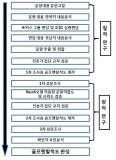
The purpose of present study is to develop the'Golf Mental Scale'that measures and assesses golf players' cognitive, emotional, behavioral response per golf mental factor experienced while competing in depth. In order to achieve this research purpose, Researcher collected raw data of golf mental question through literature review and interview with 8 members of Korean male national golf team and gathered questions per factor through Deductive-Inductive Content Analysis for the raw data. Then, Researcher conducted first and second questionnaire survey targeting 253 of elite & pro golf players and conducted Rasch Model and Confirmatory Factor Analysis for the data collected using SPSS 21.0, Winsteps Ver. 3.65 Program, AMOS 18. The conclusion reasoned out through these research process was as follows: First, golf players' psychological factor structure identified was revealed as Concentration, Self-confidence, Anxiety and Arousal control, Emotion control, Thought control. Total 37 questions were determined. Second, 5 point scale was revealed to be a good fit for Golf Mental Scale. Third, the result of Construct Validity Verification of CFA showed that Golf Mental Scale model was a good fit. Fourth, Reliability of Golf Mental Scale showed high level by recording Cronbach' α value .936. Fifth, Internal Consistency of Convergent Validity and Discriminant Validity was revealed to be satisfied. Eventually, Golf Mental Scale is expected to be used practically as a functional test tool that provides participant's response toward each situation-specific questions concretely and an objective evaluation of participant's golf mental ability per factor considering questions'level of difficulty and participants'characteristic.

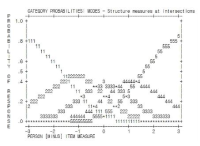
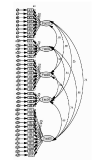
PURPOSE This study aimed to verify the influence of imposter syndrome tendencies in athletes on their achievement goal orientation, and regulatory focus. METHODS Data collected from 413 athletes through surveys were analyzed using SPSS version 27.0 and AMOS version 21.0 to assess reliability and validity, conduct independent sample t-tests, perform correlation analysis, and conduct multiple regression analyses. RESULTS The findings revealed significant sex-based differences in imposter syndrome tendencies, achievement goal orientation, and regulatory focus. Moreover, significant correlations were observed between sub-factors of imposter syndrome, achievement goal orientation, and regulatory focus. Imposter syndrome tendencies had varying effects on achievement goal orientation, with the discount factor significantly influencing approach orientation, the fake factor significantly affecting avoidance orientation, and fear factors significantly impacting self-avoidance. Additionally, imposter syndrome tendencies influenced regulatory focus, as the discount factor significantly affected both promotion focus and prevention focus, while fake and fear factors significantly influenced prevention focus. CONCLUSIONS This study underscores the importance of athletes' imposter syndrome tendencies as significant contributors to psychological variables related to motivation, including achievement goal orientation and regulatory focus.

Purpose This study was to examine the effect of athletes’ personality on coach-athlete maintenance of relationship. Methods For this purpose, the data was collected by 284 athletes using personality five factor questionnaire and Coach-Athlete Relationship Maintenance Questionnaire(CARM-Q). correlation and multiple regression analysis were conducted to verify the relationship between five personality factors and maintaining coach-athlete relationship. Results The results were as follows: Personality had a significant effect on the maintenance of coach-athlete’s relationship. Firstly, the artificial neural network was analyzed to find the influence of personality that determine positive relationships with coaches. Conclusion As a result, it was confirmed that the favor was the main discriminant factor in maintaining the relationship of coach-athlete. Finally, openness and sincerity were found to maintain and develop the positive relationship with coaches.

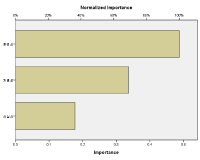
PURPOSE This study analyzed research on physical activities for elementary school students 1st and 2nd-graders to explore teachers’ perceptions and instructional practices in physical activity classes. METHODS Twelve studies published in academic journals conducted between 2000 to 2022 were selected for analysis. RESULTS The research articles were categorized into three domains: perception of physical activity in lower grades, operational features, and factors influencing practices from a didactic perspective. Challenges identified include dilemmas between curriculum documents and actual practice, a lack of practical teaching expertise, and a teaching culture discouraging physical activity in lower grades. Operational patterns were restructured into “avoidance-style classes,” “ad-hoc classes,” “textbook-dependent classes,” and “textbook-reorganization classes.” Factors influencing physical education for early elementary students included “teacher support factors,” “environmental factors,” and “administrative factors.” CONCLUSIONS In conclusion, this study advocates for policies that systematically improve perception, administration, and support classes for activating physical activities in lower elementary school students. The findings suggest the need for strategies such as adapting integrated curricula, creating training programs and educational materials, ongoing professional development activities for teachers, and specific research focused on physical activities for lower grade elementary students.
Purpose The purpose of this study was to develop a psychic energy management scale that construct a concept and based on extracted contents of structural validity and reliability of university athlete psychic energy management inventory. Methods To develop the scale, the researches were completed <research ⅰ; constructing sub-factors of Psychological Energy Management, ⅱ; developing scales of psychic energy management, ⅲ; verifying validity of psychic energy management>. The results shown are a follows. Results The psychic energy management inventory contents of the university athlete were categorized into five categories ; team energy, game energy, environment energy, leisure energy and body energy. Through statistical procedures and factor analysis, the psychic energy management inventory was developed with 4 factors 18 items (coach energy 4 question items, game/environment energy 6 question items, colleague energy 4 question items, body energy 4 question items). Conclusion Convergent validity and discriminant validity was demonstrated through the external validity, the multi-group analysis confirmed the structural equivalence of the scale between the school grades.

Purpose The purpose of this study was to examine the influence of coaches’ emotional leadership on athletic satisfaction and to investigate mediating effect of intrinsic motivation perceived by professional female basketball athletes in Korea and Japan. Methods 154 professional female basketball athletes in Korea and Japan participated in this study and responded to questionnaires which consisted of coaches’ emotional leadership, intrinsic motivation, and athletic satisfaction. The collected data were analyzed by frequency analysis, confirmatory factor analysis, reliability analysis, descriptive statistical analysis, correlation analysis, and structure equation analysis with using SPSS 23.0 and AMOS 23.0. Results The results of this study were as follows; Firstly, coaches’ emotional leadership had positive effect on athletic satisfaction. Secondly, coaches’ emotional leadership had positive influence on intrinsic motivation. Thirdly, intrinsic motivation had positively affect on athletic satisfaction. Lastly, intrinsic motivation completely mediated the relationship between coaches’ emotional leadership and athletic satisfaction. Conclusion In conclusion, these findings imply that coaches’ emotional leadership and intrinsic motivation are critical factors for improving athletic satisfaction.




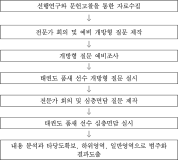
The purpose of this study was to develop and validity Competitive State Anxiety Scale for Taekwondo Form athlete(CSATF). The participants were composed of the 48 Taekwondo Form athlete to explore sub-factors of Competitive State Anxiety for Taekwondo Form athlete. The data were collected by an open-ended questionnaire and interview. The participants were composed of 257 national Taekwondo Form athlete to develop Competitive State Anxiety Scale for Taekwondo Form athlete. This 157 athlete data were used for items analysis, reliability analysis and exploratory factor analysis. And 100 athlete data were utilized for confirmatory analysis. Also convergent validity, discriminant validity, predictive validity latent mean analysis of CSATF were performed The results of this study were as follows. Firstly, the results revealed that the four general dimensions were identified such as cognitive anxiety, somatic anxiety, state of confidence, environmental anxiety. Secondly, CSATF comprised cognitive anxiety(5 item), somatic anxiety(5 item), state of confidence(5 item) and environmental anxiety(6 item). Thirdly, convergent validity, discriminant validity and predictive validity, the multi-group analysis according to gender examined validity of CSATF.


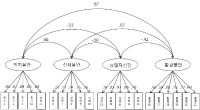
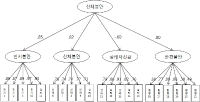
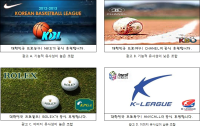
The purpose of this study was to examine the effects of congruence type between sporting event and corporate sponsor as well as the effects of advertisement exposure frequencies (1, 3 or 5 times) on advertisement attitude and advertisement effectiveness, including brand attitude and advertisement wear-in and wear-out effects. Data (N=150) were collected using a convenience sampling method and 3-group random assignment. The collected data were analyzed by means of frequency analysis, reliability analysis based on factor rho coefficient, correlation analysis, one-way ANOVA, confirmatory factor analysis, and latent mean analysis. The results were as follows; firstly, in case of higher functional congruence condition, advertisement attitude was most positive in a 3-time exposure situation and it decreased as advertisement exposure frequency further increased. However, in the lower functional congruence situation, advertisement attitude was continuously decreased as advertisement exposure frequencies increased. Secondly, in the higher image similarity situation, advertisement attitude was increased as advertisement exposure frequencies increased. On the other hand, in the lower image congruence situation, advertisement attitude was decreased as advertisement exposure frequencies increased. Lastly, advertisement attitude, brand attitude, and wear-in effects were statistically higher in the high functional and image congruence situations than did in the low functional and image congruence situations.


PURPOSE This study aimed to identify the factors affecting job stress in fitness instructors, and to elucidate the mediating effects of mindset on the relationship between self-reflection and job stress. METHODS Using convenience sampling, a survey was conducted with 217 male and female fitness instructors nationwide. Statistical analyses were performed using SPSS 25.0 for descriptive statistics, frequency analysis, and reliability analysis, and AMOS 22.0 for confirmatory factor analysis to validate the measurement tools. SPSS PROCESS Macro v4.0 (Model 4) was utilized to verify the mediating effects of the research model. RESULTS Self-reflection among fitness instructors was found to significantly reduce job stress. A growth mindset was found to have a partial mediating effect on the relationship between self-reflection and job stress among fitness instructors, whereas a fixed mindset did not have a significant impact . CONCLUSIONS The results confirm that self-reflection and having a growth mindset significantly influence the reduction of job stress in fitness instructors.
PURPOSE This study aimed to identify the underlying dimensions of brand (professional sport team) authenticity and to develop a valid, reliable scale to measure these dimensions. METHODS A pool of 67 potential items was drawn through a literature review, content analysis, qualitative research (n=43), and an expert evaluation. The identified items were subjected to exploratory factor analysis (n=248) and confirmatory factor analysis (n=285). In addition, multiple regressions were conducted to examine the criterion validity of the scale. RESULTS The results showed that the brand authenticity scale for professional sport teams consists of 42 items representing 8 dimensions: continuity, originality, quality commitment, heritage, symbolism, credibility, stakeholder-related integrity, and consumer-related integrity. The study has proven evidences of internal consistency and convergent, discriminant, and criterion validity of the scale. CONCLUSIONS The findings suggest that the scale developed in this study offers a vital foundation to understand the structure of brand authenticity in the context of sport fans and its impact on sport consumer behavior.